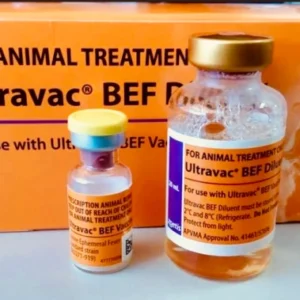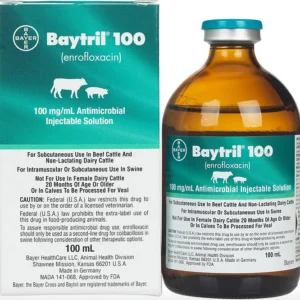Ketoprofen injection
Ketoprofen injection is a non-steroidal anti-inflammatory drug (NSAID) widely used in veterinary medicine to manage pain, inflammation, and fever. It is especially valuable for treating musculoskeletal disorders and colic in horses, mastitis in cattle, and various inflammatory conditions in pigs and other animals. Ketoprofen for dogs, Ketoprofen for cats, Ketoprofen for horses, Ketoprofen veterinary uses
Active Ingredient
Ketoprofen
Belongs to the propionic acid class of NSAIDs (like ibuprofen)
Has analgesic, anti-inflammatory, and antipyretic properties
Species Commonly Treated
Horses
Cattle
Pigs
Ketoprofen for dogs
Sometimes used off-label in dogs and cats (with caution and vet supervision)
Form & Administration Ketoprofen injection
Form: Sterile injectable solution
Concentration: Usually 100 mg/mL
Route:
Intravenous (IV) – most common in horses
Intramuscular (IM) – more common in cattle and pigs
Subcutaneous (SC) – sometimes used in smaller animals
Indications
Ketoprofen for horses
Horses
Musculoskeletal inflammation and pain (e.g., arthritis, tendonitis, laminitis)
Colic – to relieve visceral abdominal pain
Post-operative pain and inflammation
Cattle
Mastitis
Musculoskeletal disorders
Respiratory infections with fever and inflammation
Pigs
Postpartum dysgalactia syndrome (PDS/MMA)
Respiratory disease-related inflammation Ketoprofen injection
Dosage Guidelines (Always follow your veterinarian’s exact dosage instructions)
Ketoprofen injection
Horses
2.2 mg/kg IV once daily
Example: A 500 kg horse = 11 mL of a 100 mg/mL solution
Cattle and Pigs
3 mg/kg IM or IV
Example: A 500 kg cow = 15 mL
Contraindications
Hypersensitivity to ketoprofen or other NSAIDs
Gastrointestinal ulcers or bleeding
Kidney or liver dysfunction
Do not use with other NSAIDs or corticosteroids simultaneously
Withdrawal Times (for food-producing animals)
Cattle meat: ~4 days
Milk: ~0-48 hours (depending on formulation and country)
Ketoprofen for cats
Pigs: ~4 days
Horses for meat: 4 days
Always confirm with your local regulatory authority
Adverse Effects
Gastric irritation or ulcers (especially with prolonged use) Ketoprofen injection
Renal toxicity if dehydrated
Local injection site swelling
Rare: blood dyscrasias or allergic reactions
Ketoprofen veterinary uses
Storage
Store at room temperature (15–25°C / 59–77°F)
Protect from light
Use only under veterinary supervision
Benefits
Fast-acting pain relief
Reduces inflammation without heavy sedation
Useful in both acute and chronic conditions
Ketoprofen injection
As part of the trusted equine pain and sedation portfolio from Zoeti is safe and effective against equine pain and inflammation. Hoof pain associated with chronic laminitis is significantly reduced for up to six hours with
n the treatment of visceral pain associated with colic and in the treatment of inflammation and pain associated with muscrders.uloskeletal diso Ketoprofen
recommended in those cases where corticosteroid therapy is contraindicated Ketoprofen





Reviews
There are no reviews yet.